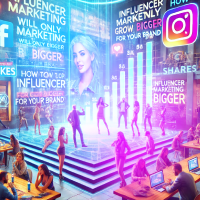
In 2025, YouTube has evolved into more than just a media platform. It now plays a central role in how people shop. According to Silverpush’s State of Retail on YouTube Report 2025, users turn to YouTube not only to explore products but also to compare options, validate choices, and make informed decisions. Its blend of visual storytelling, creator influence, and authenticity is reshaping how retail brands engage with audiences.
The platform guides viewers across every stage of the shopping journey. People start with creator vlogs and hauls for inspiration, move into tutorials and comparisons for research, and finish with testimonials or long-term reviews to confirm their choices. YouTube stands apart from platforms built for quick discovery by encouraging deeper exploration and lasting engagement.
Retail Video Content Is on the Rise
YouTube’s shopping content has grown rapidly in the past year. Retail and e-commerce videos received over 724 billion views, marking a 54% increase. Shorts played a major role by contributing 272 billion views, which highlights the importance of short-form content in capturing attention.
Several formats are seeing strong momentum. Shopping vlogs increased by 58%, how-to tutorials by 37%, and tech unboxings by 45%. The chart below breaks down their year-over-year growth in 2025.

Graph I: Fastest-growing retail content types on YouTube in 2025, based on Silverpush’s State of Retail on YouTube Report
These formats help viewers understand products more deeply. They demonstrate how items work, how they solve everyday problems, and how they fit into real routines. Since 98% of users say they trust creators more than branded advertisements, this type of content plays a crucial role in shaping buying decisions.
Shoppers Want Context That Makes Sense
One of the biggest takeaways from the retail report is how much context matters. People respond better when ads match the content they’re already watching. A tech ad during a back-to-school haul or a clothing brand featured in a fall fashion vlog feels more natural and effective.
High-sale periods like Ramadan, Black Friday, and regional festivals are major view drivers. During these times, shopping content can get five to seven times more daily views. Fashion, electronics, and home decor dominate these peaks. Retailers that plan early and align with creator content during these moments see better engagement and higher conversions.
Aligning Format With Intent
Not all video formats serve the same purpose. Long-form videos are ideal for research and deeper engagement. Shorts work best for fast discovery and impulse interest. Connected TV supports lean-back, communal viewing. Retail marketers are now matching ad formats with these viewing behaviors to increase impact across platforms.

What This Means for Retail Advertisers
YouTube isn’t just for brand awareness anymore. It’s becoming a serious performance channel. Marketers are going beyond keyword or demo-based targeting. They’re using contextual signals to show up where purchase intent is already forming.
That means mapping current content trends in the retail industry to sales seasons, choosing creators people already trust, and measuring success beyond clicks. Think VTR, cart lift, or conversion during peak periods.
As shoppers continue to discover through video and creators, the brands that lean into contextual, well-timed, and format-specific strategies will be the ones that win.



















